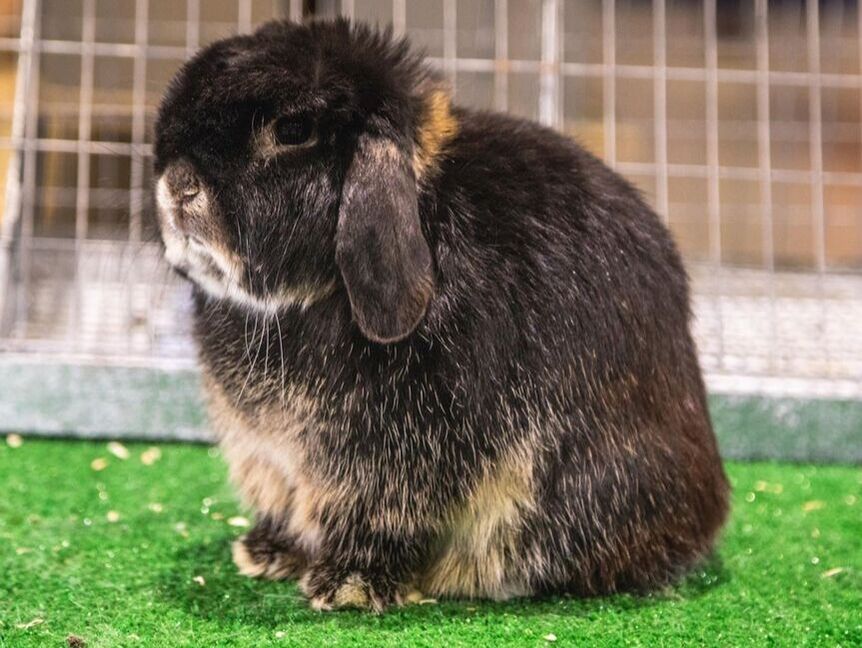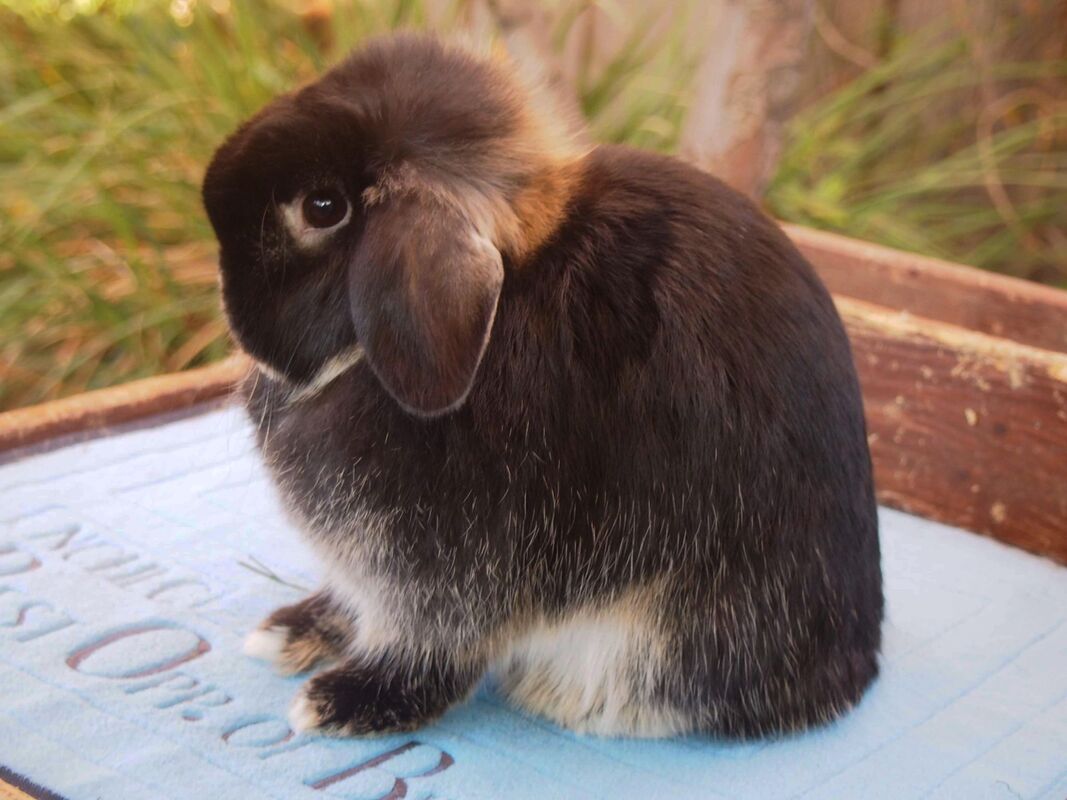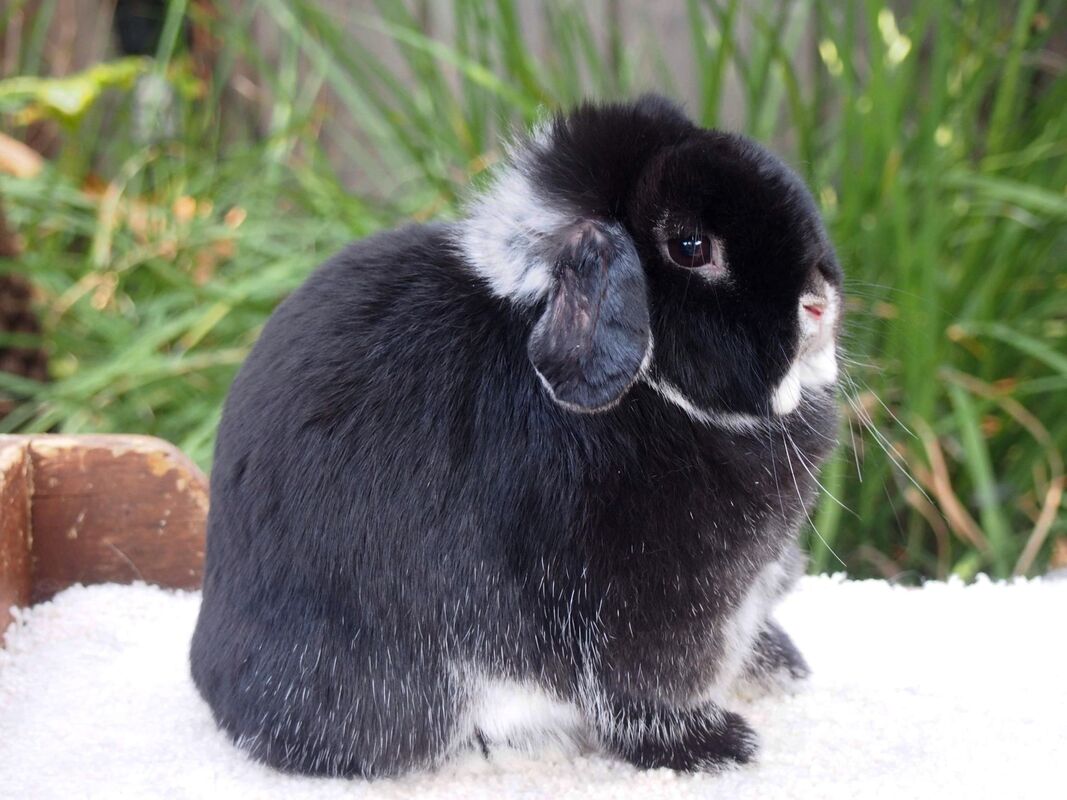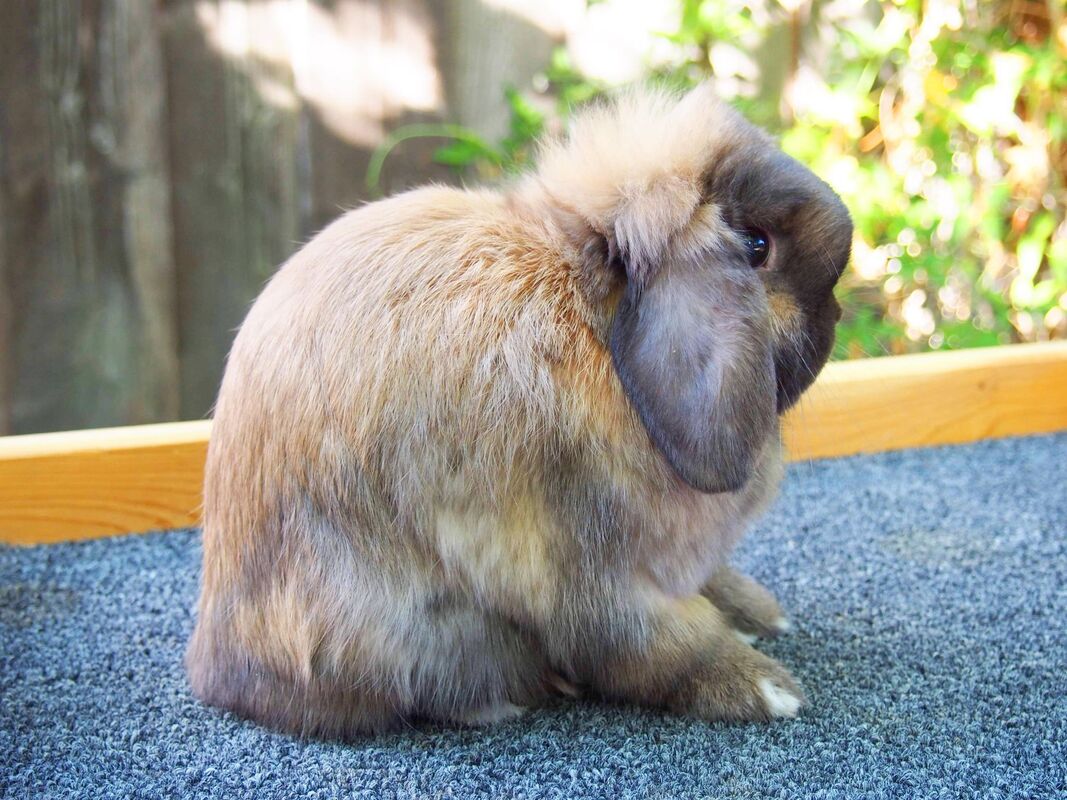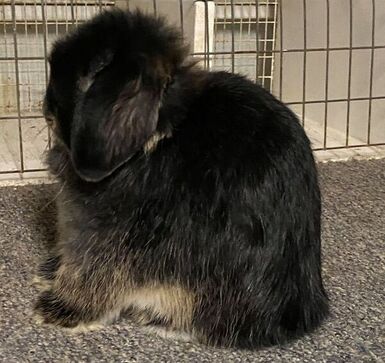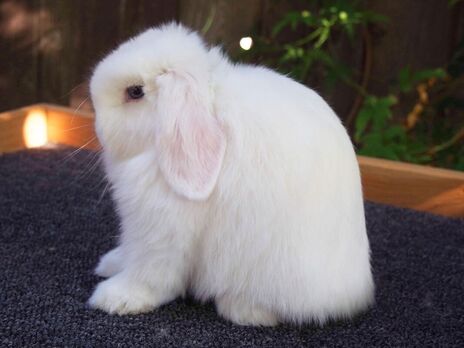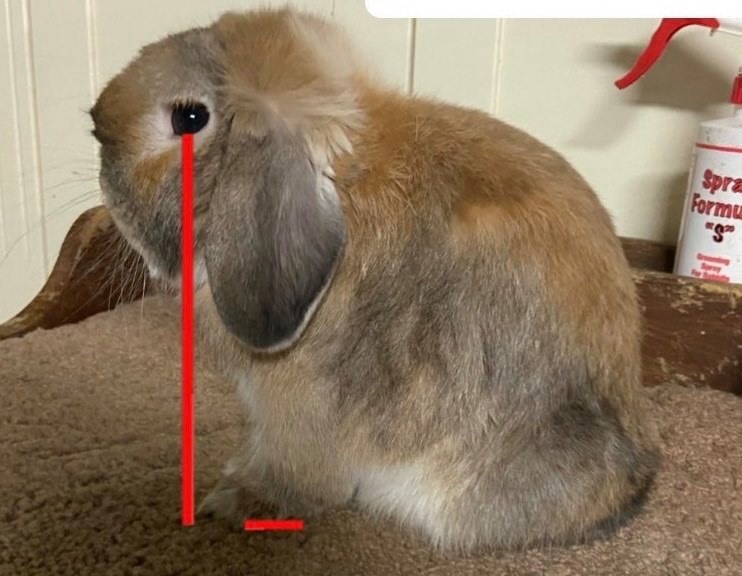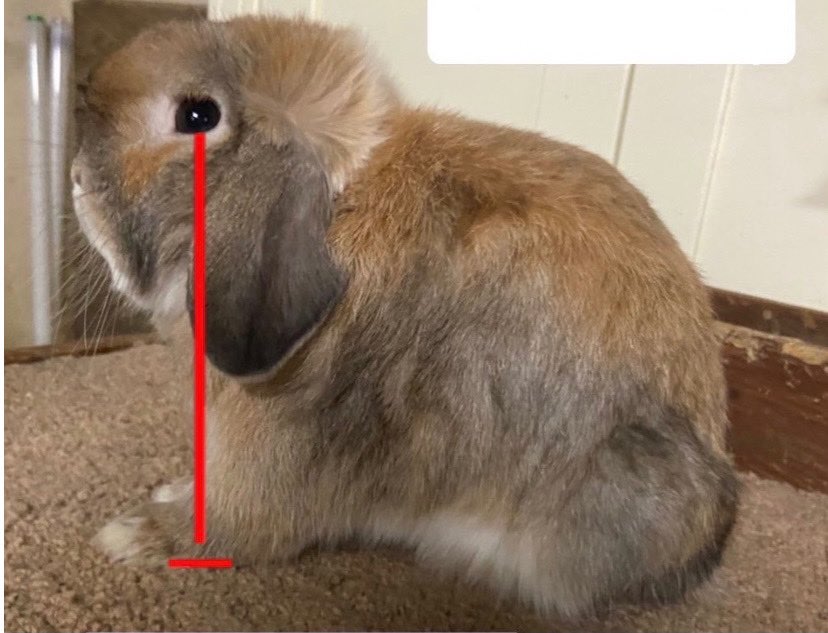In this article, I'll be talking about how to evaluate the limb in Holland Lops. Collectively, bone, feet, and legs are worth 10 points out of 100. As such, while it absolutely isn't the be all and end all of deciding a rabbit's merit, it is definitely something that is important to understand for accurate evaluations.
In the context of judging Holland Lops, bone is defined as the density, or physical thickness, of the front and rear limbs. While length or lack of straightness of the limb is certainly a fault, it would not technically be considered 'bone' as those faults do not pertain to the physical thickness of the bone in the leg.
The breed standard calls for extremely thick, massive bone in the front and rear legs. The limb is to be as short as possible, and should be as straight as possible with well-developed ankles. Interestingly, per the Holland Lop breed standard, the only 'severe faults' pertain to the limb. Judges are encouraged to fault severely for length of limb or refined bone. That said, because bone, feet, and legs are only 10 points out of 100, it's important to not go to the other extreme and over-fault rabbits with incorrect front limb. Those 10 points could be further sub-divided into density of the bone, length of the limb, and correct ankle structure, making each of these aspects about 3.3 points apiece. If a Holland has one very severe limb fault, they should probably lose a couple of points. If we think about it in the context of the entire collective 100 points though, a 'severe' limb fault probably shouldn't mean a whole lot compared to a body or head fault, which could easily dock you 5 or 10 points absolute minimum. So while it's certainly important to breed for the best rabbits possible, it's important to note that priority should be given to the things that carry the most points.
Another extremely important thing to note is that correct posing is of utmost important when evaluating the front limb. Over-posed animals will shove their front limb up underneath themselves. This gives the illusion of a much shorter, straighter front limb than that actually exists. Not only does this give others an unrealistic view of your animals, but it also handicaps you as the breeder. Without a correct pose, it will be much harder for you to select for a more correctly typed animal. When posing, make sure that the base of the front foot (where the weight is resting) is directly in line with the eye. Please note that the tips of the toes do not count, and would still be considered over-posing. Why is this? Let's think about it. If you have a rabbit with, say, an extra inch of limb length, and it is over-posed with the tips of the toes in line with the eye, it is going to distort the topline. The shoulder will be pushed up an extra inch, the rabbit will appear to lack depth of hindquarter, and it will appear to have much straighter, shorter limb than it actually has. By placing that extra inch of length forward of the eye, you will get a much more accurate evaluation of not only the front limb, but of the body and structure of the animal as a whole. I will show some photos to demonstrate this later in the article.
With that all said, let's go ahead and take a look at some example photos. We will be focusing on front limb in this article rather than rear limb. In my experience, rabbits with good front limb will have the proper rear limb to balance, so gaining a solid understanding of the front limb will set you well on your way to producing correct rear limb as well.
Note: Please bear with me as front/rear limb is really not a strong suit in my herd. These are the best examples I could find.
In the context of judging Holland Lops, bone is defined as the density, or physical thickness, of the front and rear limbs. While length or lack of straightness of the limb is certainly a fault, it would not technically be considered 'bone' as those faults do not pertain to the physical thickness of the bone in the leg.
The breed standard calls for extremely thick, massive bone in the front and rear legs. The limb is to be as short as possible, and should be as straight as possible with well-developed ankles. Interestingly, per the Holland Lop breed standard, the only 'severe faults' pertain to the limb. Judges are encouraged to fault severely for length of limb or refined bone. That said, because bone, feet, and legs are only 10 points out of 100, it's important to not go to the other extreme and over-fault rabbits with incorrect front limb. Those 10 points could be further sub-divided into density of the bone, length of the limb, and correct ankle structure, making each of these aspects about 3.3 points apiece. If a Holland has one very severe limb fault, they should probably lose a couple of points. If we think about it in the context of the entire collective 100 points though, a 'severe' limb fault probably shouldn't mean a whole lot compared to a body or head fault, which could easily dock you 5 or 10 points absolute minimum. So while it's certainly important to breed for the best rabbits possible, it's important to note that priority should be given to the things that carry the most points.
Another extremely important thing to note is that correct posing is of utmost important when evaluating the front limb. Over-posed animals will shove their front limb up underneath themselves. This gives the illusion of a much shorter, straighter front limb than that actually exists. Not only does this give others an unrealistic view of your animals, but it also handicaps you as the breeder. Without a correct pose, it will be much harder for you to select for a more correctly typed animal. When posing, make sure that the base of the front foot (where the weight is resting) is directly in line with the eye. Please note that the tips of the toes do not count, and would still be considered over-posing. Why is this? Let's think about it. If you have a rabbit with, say, an extra inch of limb length, and it is over-posed with the tips of the toes in line with the eye, it is going to distort the topline. The shoulder will be pushed up an extra inch, the rabbit will appear to lack depth of hindquarter, and it will appear to have much straighter, shorter limb than it actually has. By placing that extra inch of length forward of the eye, you will get a much more accurate evaluation of not only the front limb, but of the body and structure of the animal as a whole. I will show some photos to demonstrate this later in the article.
With that all said, let's go ahead and take a look at some example photos. We will be focusing on front limb in this article rather than rear limb. In my experience, rabbits with good front limb will have the proper rear limb to balance, so gaining a solid understanding of the front limb will set you well on your way to producing correct rear limb as well.
Note: Please bear with me as front/rear limb is really not a strong suit in my herd. These are the best examples I could find.
First, let's take a look at bone density. The black otter buck on the left has very heavy bone. It is thick and stout. The black otter doe on the right has comparable front limb length to the buck pictured above, but is refined in bone (lacks bone density). She needs more limb thickness.
The black silver marten doe on the left has a short front limb. When properly posed, her limb does not extend much further than her eye. The tort doe on the right has long front limb, causing it to extend further past her eye.
The black otter doe on the left, while not perfect, is the best example of correct ankle that I could find. While it could certainly be even straighter, in my opinion it's pretty darn good. The BEW doe on the right is a good example of a weak ankle. Rather than being straight, there is a bend in the lower leg. If she had a shorter front limb it wouldn't be quite so obvious, but it is certainly not ideal regardless.
The last thing I'd like to talk about is posing. As noted earlier, correct posing is absolutely critical for accurate evaluation of the front limb.
The last thing I'd like to talk about is posing. As noted earlier, correct posing is absolutely critical for accurate evaluation of the front limb.
|
Many people would consider this rabbit properly posed. After all, his eye is in line with his front foot, right? His front limb looks pretty short and he appears deep at the shoulder.
The thing is, he really isn't correctly posed. Rather than lining the tips of his toes up with his eye, the base of his foot (where his weight naturally rests) should be lined up with his eye. You wouldn't think that it makes much of a difference, but let's take a look at the next picture to see. |
|
Wow, he looks significantly worse in this photo! But here's the thing: this is his actual type. His eye is now in line with the base of his front foot, displaying all his faults accurately. Posing correctly can be a big reality check, but at the end of the day it's really the most accurate way of evaluating a rabbit's limb (and type as a whole). In the previous photo, it would seem that he has short front limb, but in this photo it's clear to see that he has a lot of extra front limb length.
|
That's it for now! Hope this article was helpful for learning to accurately evaluate front limb.
